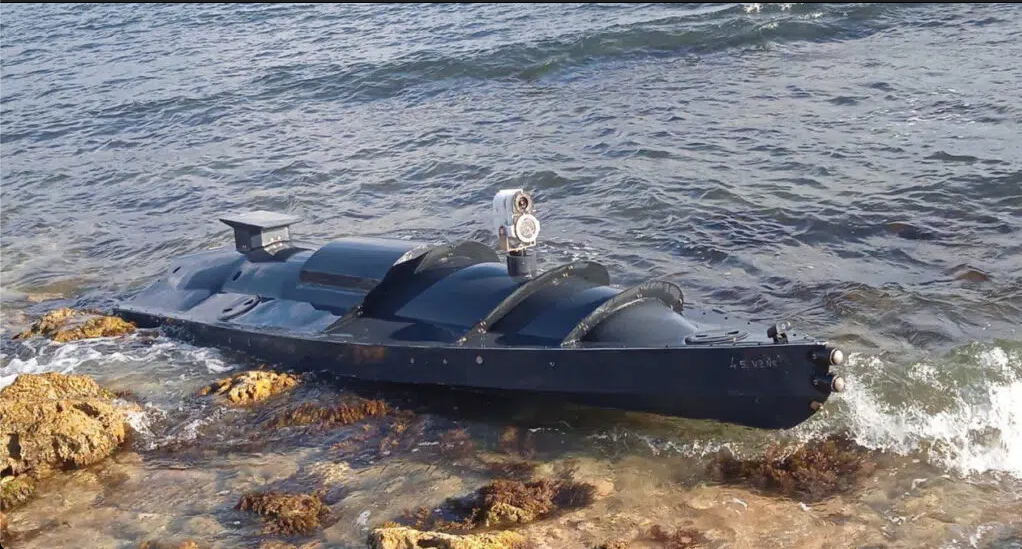
Solving short-term problems for military commanders in the Pacific and Europe is driving the Pentagon’s push to accelerate production of attritable air, sea and ground drones powered by artificial intelligence, USNI News has learned.
The Replicator initiative, announced last week by Deputy Defense Secretary Kathleen Hicks, wants to take existing or experimental unmanned systems and build them in rapid numbers to solve specific problems from commanders down range over the next two years, overseen by the Defense Innovation Unit.
On Wednesday, Hicks used the acronym ADA2—or all-domain, attritable autonomy—to counter the defense bubble China has created in the Western Pacific.
“Our ADA2, to thwart their A2AD,” Hicks said referring to the antiaccess, area denial stance China has established in remarks at the Defense News conference.
“Replicator will use existing funding, existing programming lines, and existing authorities to accelerate production and delivery at scale—by exerting leadership focus and attention on a singular operational challenge,” she said.
“These aren’t ships or aircraft that we’ll be using for the next 30 to 50 years. [These] systems are things we might use for three to five years, before we move on to the next thing.”
Speaking earlier on Wednesday, acting commandant of the Marine Corps Gen. Eric Smith said due to the nature of unmanned systems “commanders will use them more aggressively” than manned systems. He added when it comes to autonomous systems “it’s not a question of [which service] owns them” in supporting a warfighter, but if they are available.
The Replicator initiative will try to solve current problems for commanders in the Pacific and Europe with what’s readily available, naval analyst Bryan Clark told USNI News.
The new scheme will make it easier for combatant commanders to ask the Pentagon’s acquisition establishment for items.
“The commanders say ‘I have this near-term operational problem. I need a solution in one to two years,’” Clark said.
“They’re not used to [having] a customer demanding things and to [meeting] the customer’s needs.”

Clark mentioned the Ukrainian Navy’s development of high-speed explosive surface drones with spare jet ski parts to take on Russian warships in the Black Sea as an example of the problems the new initiative is trying to solve.
Hicks didn’t specify the problems Replicator is addressing now, but talked generally about autonomous ground systems for scouting and logistics, vast constellations of sensor satellites and a wide swath of unmanned aerial vehicles.
Future applications could include using disposable drones as an active defense for armor against missile threats.
She touched on existing efforts such as U.S. 5th Fleet’s Task Force 59, which used commercial drones to monitor the maritime in the Middle East.
The drones fed the data to maritime operations centers in the region, which used artificial intelligence systems to stitch together a more complete picture of ships underway in places such as the Red Sea and the Gulf of Oman.
As to which drones and to where the effort will scale, Hicks wouldn’t say.
Details on the scope of the program are still few. The Office of Secretary of Defense effort is focused on the short-term needs of combatant commanders and details of the program haven’t been widely briefed to Congress or the individual services, several defense and legislative officials confirmed to USNI News on Wednesday.
One defense official told USNI News that, depending on the program, scaling up production on an unmanned system could run into unexpected supply chain issues like the availability of specialty batteries that have slowed down existing autonomous programs.
In her speech, Hicks signaled that while the program is progressing it may be years before the public learns of its successes or failures.
“We will be deliberate about what we share publicly—though we will be working with industry, Congress and allies and partners as everything unfolds. And some things, we will only reveal at a time, place and manner of our choosing,” she said.
“I know that isn’t easy. Engineers want to take pride in their work. CEOs want to share good news with investors. People in government want credit for their good ideas. And all that will come in time if we succeed.”





